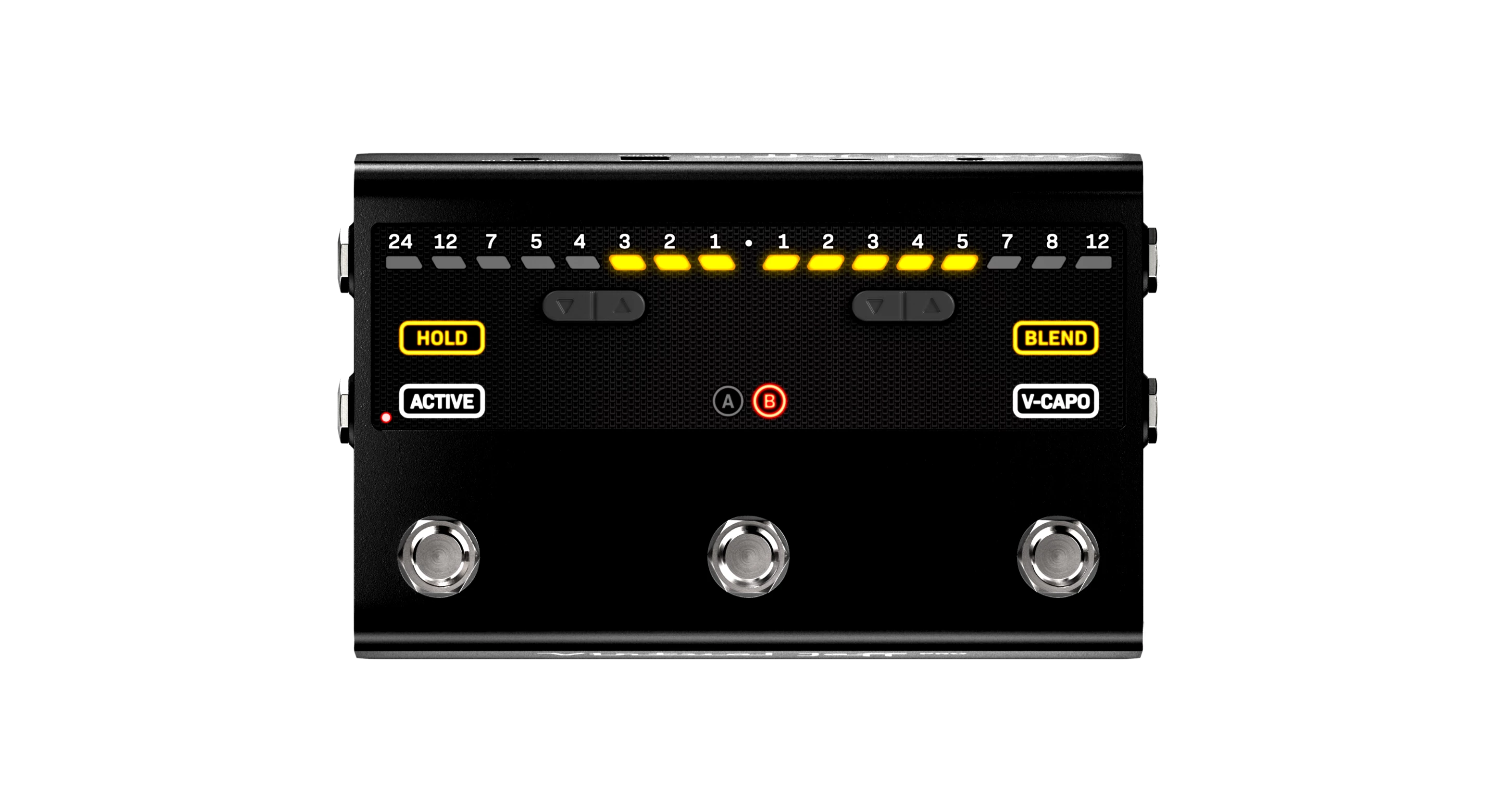Back in 2016, Australian startup Fomofx launched a digital whammy bar called the Virtual Jeff that could be mounted to just about any guitar, without having to modify the host instrument. Now the novel vibrato arm has gone Pro.
As before, the Pro doesn't involve breaking out the power tools to permanently modify the body, doesn't alter the string tension in any way (so no tuning nightmares), and it's made up of two main components.
Most players will likely choose to mount the vibrato arm part of the setup behind the bridge or tailpiece for familiarity, but it could be placed anywhere that doesn't interfere with existing controls and hardware. The Virtual Jeff comes with a mounting block that's attached to the guitar using supplied adhesive tape and is reckoned to take just 10 seconds to install, then the whammy just slides on.
The vibrato arm module then needs to be connected to a companion control box – though the company recommends a cabled connection between the Virtual Jeff Pro mounted on the host guitar and the control stomp on the floor, a 2.4-GHz mini-link transmitter is supplied. The host guitar's output jack also needs to be cabled up to the instrument input on the control box (though wireless systems like Line 6's Relay G10 are also supported).

The player can set exactly how far up or down the pitch travels during a sweep, and can set up and switch between two different whammy presets. A new virtual capo mode is included for instant up-shifts but also drop tuning, and pickers can blend the original guitar sound with a pitched sound for "glorious chorus, metal sub-octaves, parallel harmonies and much more." A hold feature freezes the pitch during a bend to free up the picking hand.
There are three footswitches atop the control box. The first is used to turn the system on or off, and two bypass modes are included. True bypass means that the system will not influence the guitar's output in any way, but the Pro also offers a studio-quality analog buffer for silent switching and to maintain a consistent tone. The middle footswitch hops between A and B presets, and the third is used to engage the virtual capo. It looks like you will need to invest in a separate A/B switch for the blend/hold feature though.
The Virtual Jeff Pro looks to be a sizable upgrade on the original, with the developers promising tonal transparency, ultra-low latency and "flawless tracking." And while there are floor stomps that can offer basic similar functionality – such as the DigiTech Whammy – as you can see in the video below, using the Pro appears natural, intuitive and a whole lot of fun. It's now available for sale at US$499.
Product page: Virtual Jeff Pro






